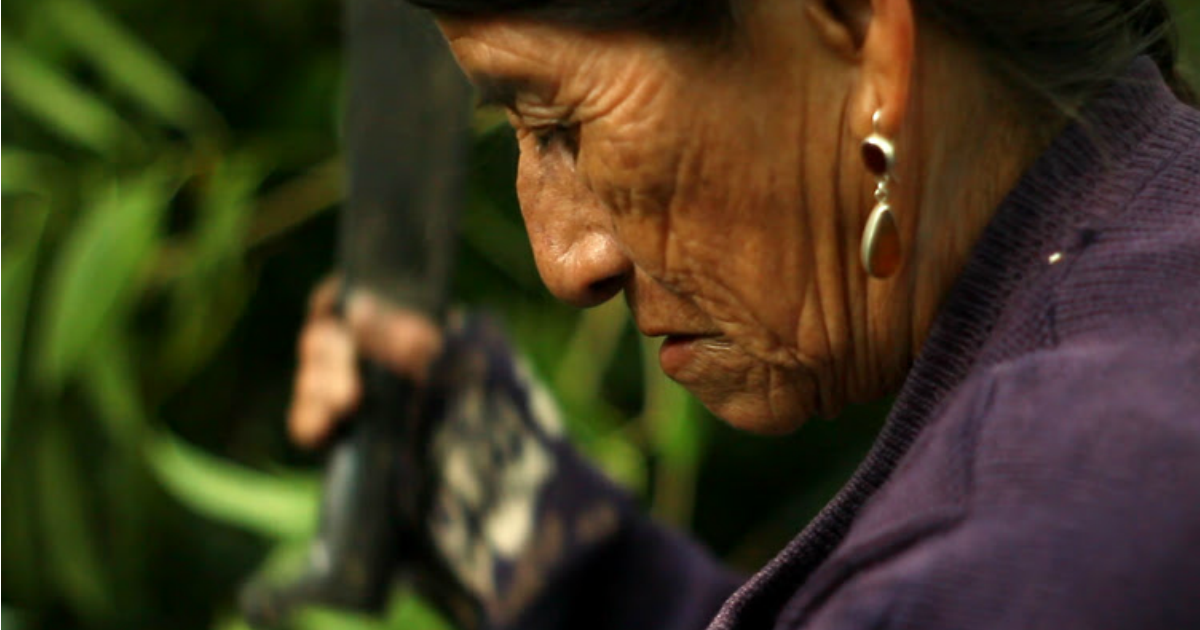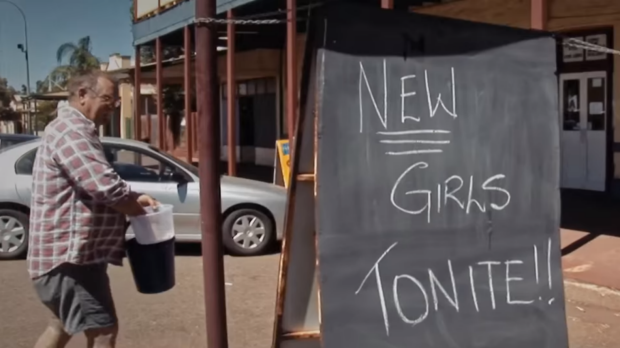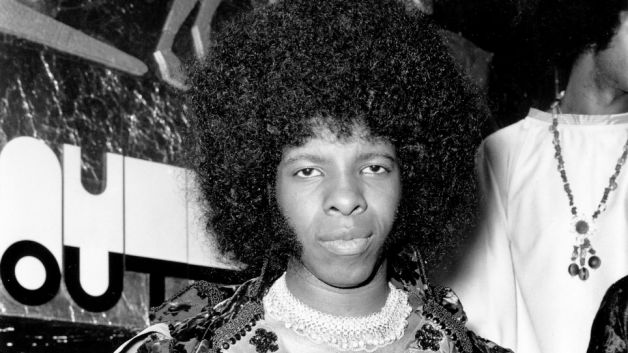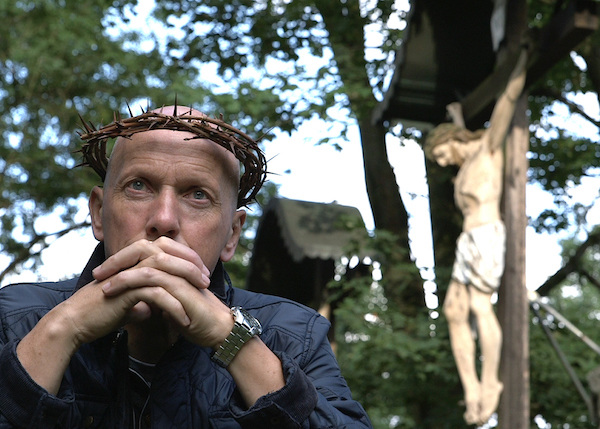Doc Corner Goes to Slamdance
 Tuesday, January 31, 2017 at 12:02PM
Tuesday, January 31, 2017 at 12:02PM by Glenn Dunks

Okay, so if we had really gone to Slamdance I feel like you would have noticed with some extra coverage given that it runs at the same time and in the same city as Sundance. So despite not travelling to the snowy surrounds of Park City, I was still nonetheless lucky enough to get a peek at Slamdance’s documentary slate. And here we are telling you about FIVE of the titles in this super-sized edition of Doc Corner. Those five include outback savages, musical amateurs and geniuses and more that should be coming to festivals and VOD over the next year...
THE MODERN JUNGLE
Directors Charles Fairbanks and Saul Kak do something really interesting in their feature debut, the gorgeously lensed The Modern Jungle. On one hand, the film is an observatory look at the lives of the Zoque people from the south of Mexico. A people who attempt to live as their ancestors once did harvesting maize, fishing for snails in creeks, and chopping down trees for firewood in a modernised world that is growing increasingly enslaved by capitalism with their land being literally taken away from underneath their feet.
The Modern Jungle trailer from Charles Fairbanks on Vimeo.
On the other hand, it is a fascinating glimpse into the predicaments facing documentary filmmakers and confronts the undeniable ways that the mere presence of a documentarian can alter the very authenticity they sought to capture on film. It is this secondary element that raises The Modern Jungle to great cinema, offering its makers, subjects and audiences a moral quandary worth thinking about. Unlike other films that deliberately include or exclude the filmmaker, The Modern Jungle turns its directors into unwilling participants as their existence in the lives of their subjects' lives changes the way they exist and interact. It makes for some incredible scenes that are paired rather astutely with those documenting their day-to-day lives, particularly as Juan, a shaman suffering from a prominent medical issue, falls under the spell of vitamin salespeople attempting to cheat him out of his money and his health.
This is a powerful and engaging film. If there was any justice, it would become a festival word-of-mouth hit, accumulating viewers lured by its intoxicating observations of modern jungle life, but swayed by its thorny politics.
HOTEL COOLGARDIE
This Australian documentary aims to take the beer-soaked horrors of Ted Kotcheff’s 1971 outback classic Wake in Fright and give it a modern make-over. Two young Finnish backpackers, Lina and Steph, arrive in Australia with no money and their baggage lost somewhere in Bali. They take up an offer to work for three months at a pub in a small West Australian town where they can earn some money to go driving across country and soak up some of the local sights while they’re at it. They soon find themselves in a town where there is nothing to do but drown in a desert sea of misogyny and brute grotesquery as the local men use the two women as batting practice for their sickening games of verbal and psychological sexual assault.

Out of their depths as they are, it's a frightening vision. Beginning with their arrival in Coolgardie as they discover they are essentially being pimped out for the amusement of lonely men and with little help from local women, the soul-crushing abuse only escalates from the locals. They get it particularly tough from the pub’s owner who proves to be the film’s most insidious villain; a bile-spitting man more frustrated by their inability to master a local cash till than his patrons’ mistreatment. The film builds towards an ending that is as real-life horrific as anything Wolf Creek could muster (yes, there may just be an amputation) about the Australian outback, but not before deservedly having already scared off anybody wanting to give the country life a chance.
Strad Style Trailer from Stefan Avalos on Vimeo.
STRAD STYLE
Winner of the festival’s Documentary Grand Jury Prize and, unsurprisingly, the Audience Award for Documentary Feature, Stefan Avalos’ charming Strad Style is a sort of Tim’s Vermeer for the musical set as it follows Daniel Houck as he sets out to make a replica of a Stradivari violin, the most famous and valuable violin in history, for acclaimed virtuoso concert violinist Razvan Stoica. Facing not just time and construction struggles, but also money and a house in rural Ohio that appears to be falling apart, Strad Style eventually earns the feel-good points it is clearly aiming for once you realize Avalos isn’t mocking his subject. It would have been all too easy to do and perhaps it was just my pessimism showing that made me think that's what it was doing in the first place.
Strad Style’s most poignant narrative strand sadly only comes to prominence in the final act as Daniel grows increasingly vocal about the dissatisfaction he has of his life. His desire to leave the cultural wasteland behind is palpable and something that anybody who has ever been in a similar situation to will relate to. Camerawork is rudimentary, but in some ways appropriately captures the messiness and the scrappiness of its subject’s life. A crowd-pleaser that should find fans primarily through VOD.

ON THE SLY: IN SEARCH OF THE FAMILY STONE
Think of a funky Searching for Sugarman, as actor-turned-documentary-filmmaker Michael Rubenstone sets about relieving his personal and career turmoil by attempting to find the whereabouts of Sly Stone and uncover the history of the musical genius and front man for Sly and the Family Stone. Rubenstone’s mission sees him going into debt as he crosses the country in search of his idol only to end up more or less where he started. Like Rodriguez in the Oscar-winning Sugarman, rumors of Sly’s whereabouts are akin to a game of Chinese whispers – is he homeless or living as a recluse in a mansion in the Hollywood Hills? The film doesn’t actually answer these questions entirely, although it does find time for fun anecdotes from the man’s collaborates over the years.
It’s most interesting passage involves the potential discovery of Sly, a development that the film teases in its opening scene before going back to the beginning. Is it a game of Catfish or the real deal? The particulars of how he winds up there is what lends the film its only real thrust, but a film-ending coda will disappoint for anybody seeking more of a dramatic punch. A strictly-VOD affair thanks to its super low-budget production values (including blurry, pixelated YouTube videos of performances and TV interviews), it will amuse fans of the performer, but offer little more than a casual diversion for the rest.

THE CHILDREN SEND THEIR REGARDS
Survivors of clergy sexual abuse offer their firsthand accounts in this sober documentary, a film lacking polish and sheen, but which offers its subjects a rare chance to simply talk and to have people truly listen. Patricia Josefine Marchant’s The Children Send Their Regards allow a voice to ten subjects whose stories have often gone untold (or been dismissed when they’ve been spoken aloud) and they speak, often in graphic details, recalling the memories, questioning the perpetrators (always said by name), detail the confusions, and theorize on how these incidents affected them. In one of the most potent moments, one of the film’s subjects suggests that in his current relationship there are three people: himself, his girlfriend, and the priest who repeatedly abused him as a child.
Through the 135-minute documentary, their stories are interspersed with old home movies of their lives as carefree children (although it’s not labelled who exactly the children are) as well as visits by the men and women to the locations at which they were abused. They are often large, cold buildings like a church or a schoolhouse or a forest or a park. Their stories typically follow similar patterns with many repeating the same beats: communities that new better, parents who ignored under a faith in god, a failure of retribution, the methodology of evil to turn a child’s confusion into a weapon. As they make their way through these locations, confronting the past, it occurs that the format of The Children Send Their Regards is as radical as it is simple. For to simply listen is one thing, but to be truly taken back is another thing entirely.



Reader Comments (2)
Glenn- I really enjoy documentaries and have watched lots based on your recommendations and this column. If you know at the time of posting where we might be able to stream them, can you include that info too? It's helpful as I immediately add them to MY LIST on the various platforms I subscribe to.
Thanks again for all your work on this and to Nathaniel for including you.
Pam, thank you very much for the kind words. I usually try and include where films can be seen (although I usually review at time of theatrical release so sometimes streaming isn't available right away). I have no word on these particular titles as they're from a festival. Hopefully they show up sometime throughout the year.